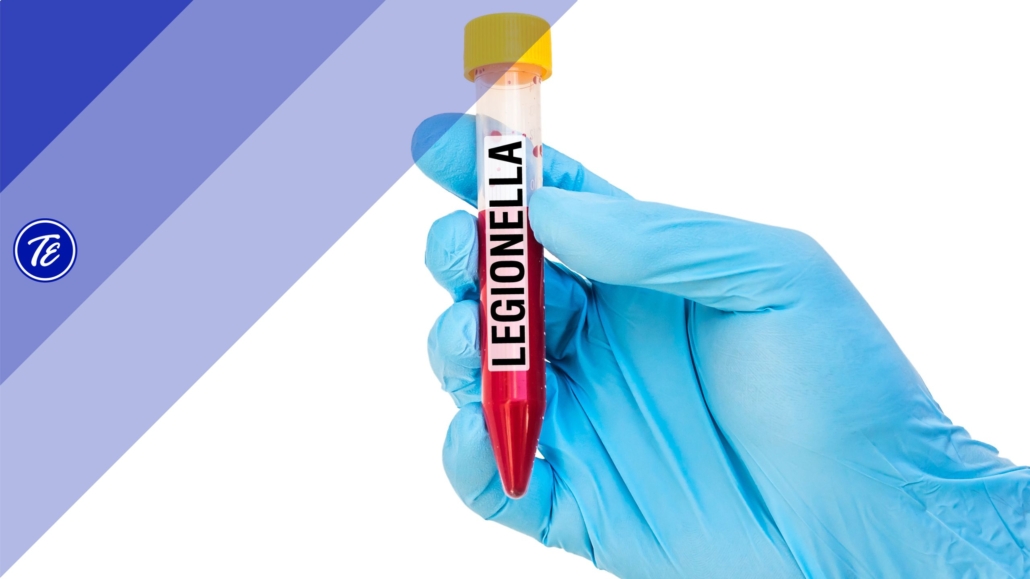Legionella, infection risk
Legionella is a bacterium that can cause serious respiratory diseases such as legionellosis. Legionella bacteria can proliferate in the water systems of buildings. The risk of infection by water is relatively high since legionella can survive in water at temperatures between 20°C and 50°C, ideal for bacterial growth. Water systems in buildings, such as cooling towers, air conditioners and domestic hot water distribution systems, can be real incubators for legionella.

How to avoid the proliferation of legionella in the water systems of buildings
Legionella is transmitted through the inhalation of small infected water droplets, such as those produced by showers, taps or air conditioning. The disease is not transmitted from person to person. To prevent legionellosis it is important to keep the water systems clean and well cared for. This includes regular cleaning of cooling towers and water tanks, maintaining water temperatures below 20 ºC or above 60 ºC, eliminating stagnant water in water systems, and controlling the concentration of chlorine in water.
Identification of risk areas and monitoring of water systems
Identification of risk areas and monitoring of water systems play a key role in preventing the proliferation of legionella in buildings.
First, it is important to carry out a detailed analysis of water systems to identify any critical points, such as heat storage tanks, water storage tanks and misting systems.
Once these critical points have been identified, installations should be regularly monitored for anomalies or changes in control parameters. In particular, the monitoring of water systems shall include the measurement of water temperature at different points in the plant, verification of the presence of chemicals such as chlorine and periodic review of plants to ensure that they comply with current regulations.
In addition, it is useful to take preventive measures to keep the plant in optimal hygienic conditions, such as periodic cleaning of heat storage tanks and water storage tanks.
Regular maintenance and cleaning of heating, ventilation and air conditioning systems
Regular maintenance and cleaning of heating, ventilation and air conditioning systems are essential to prevent the proliferation of legionella in buildings. Air conditioning is one of the most common places where legionella can proliferate.
Regular maintenance includes periodic checks to detect any leakage or failure, replacement of worn parts and cleaning of the entire air conditioning system. Cleaning the heating, ventilation and air conditioning systems requires the use of specific detergents to remove the deposits of limestone, dust, bacteria and other contaminants that can accumulate inside the plant.
There are several types of water treatment system that can be used to prevent the growth of legionella, including the use of biocides, the installation of filters, and water disinfection. One of the most common methods to prevent the growth of legionella is the use of biocides. These chemicals are added to water systems to kill any bacteria present and prevent their proliferation. Biocidal products may be based on chlorine, bromine, iodine or other chemical compounds.
Another effective method of preventing the growth of legionella is the installation of filters in water systems. Filters remove particles that can feed the bacteria and can significantly reduce the risk of legionella infection. There are several types of filters that can be used, including active carbon filters and ultraviolet filters.
Finally, water disinfection can also be carried out by physical methods such as ultraviolet irradiation. Maintenance must be carried out by qualified and specialized personnel, able to guarantee the effectiveness of cleaning operations and compliance with safety standards.
Water temperature control in water systems
Water temperature control is one of the main factors in preventing the proliferation of legionella in building water systems. Since the ideal temperature for the growth of the bacterium is between 20°C and 45°C keeping water outside this temperature range prevents the proliferation of legionella.
In Italy, potable water must be kept at a temperature between 10ºC and 25ºC at the point of distribution. However, in certain cases, such as in hospitals or nursing homes, hot water can be kept at a temperature above 60 ºC in order to disinfect plants and prevent the spread of bacteria. Thanks to the use of thermometers it is possible to constantly monitor the water temperature and adjust the hot water temperature to the points where the risk of contamination is greatest. To further reduce the risk of legionella proliferation, water cooling or heat treatment devices can be installed, which keep the water below the ideal temperature for the growth of the bacterium.


